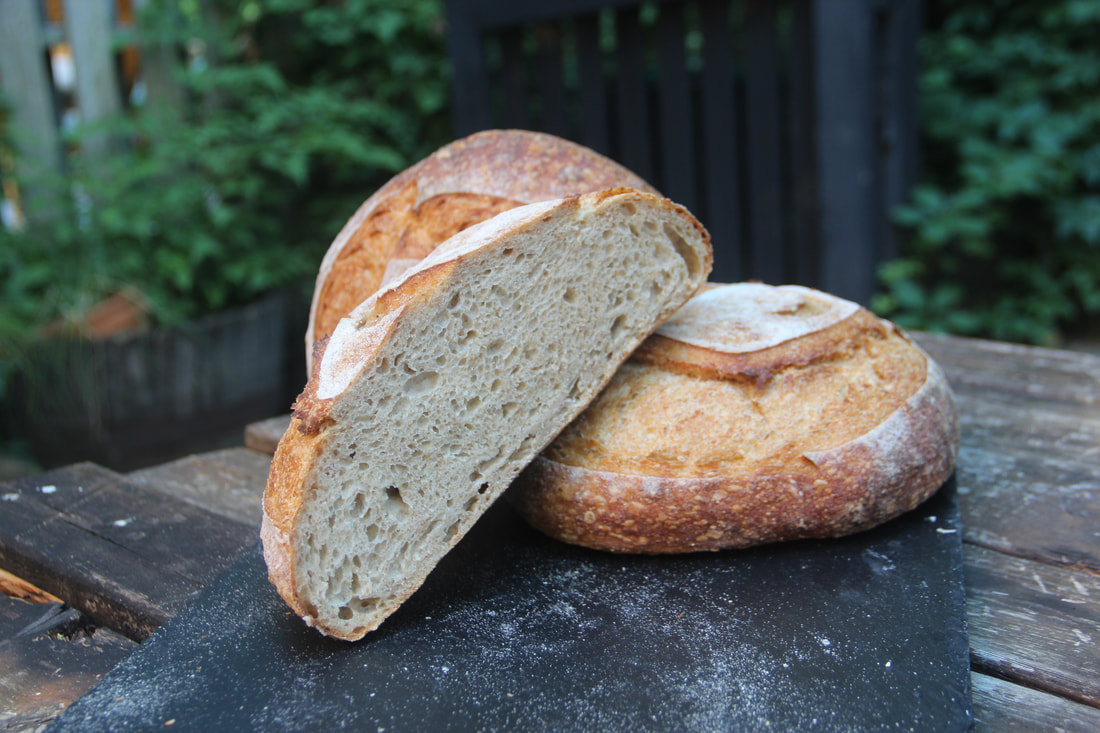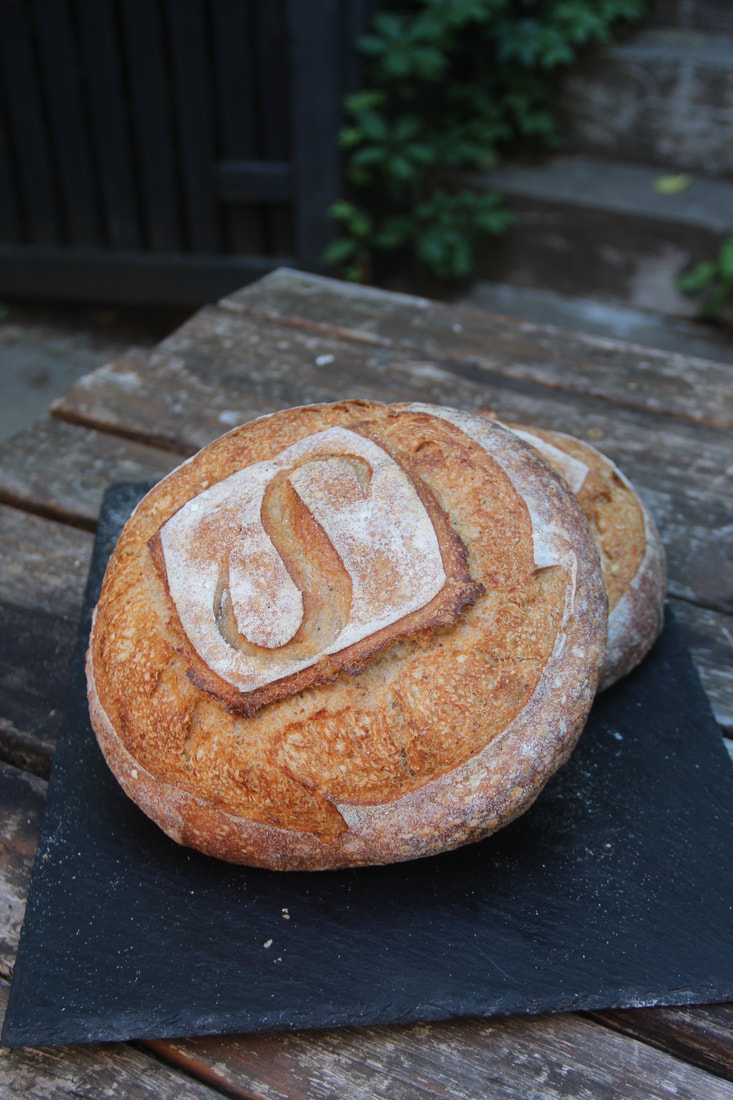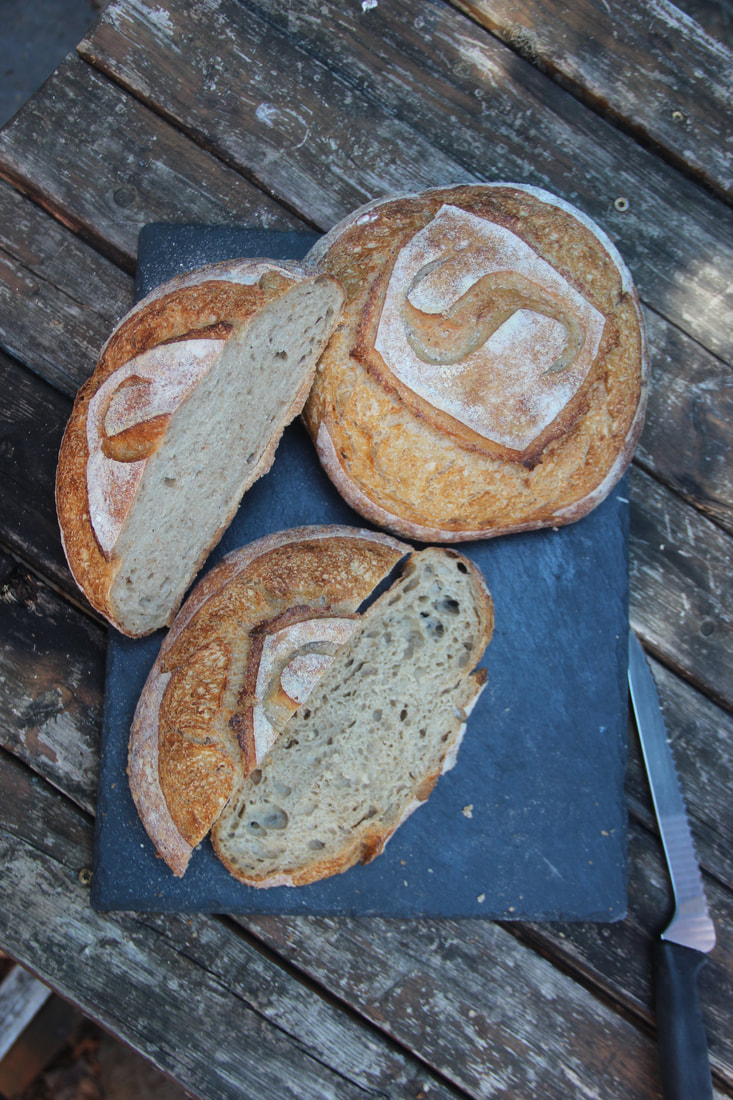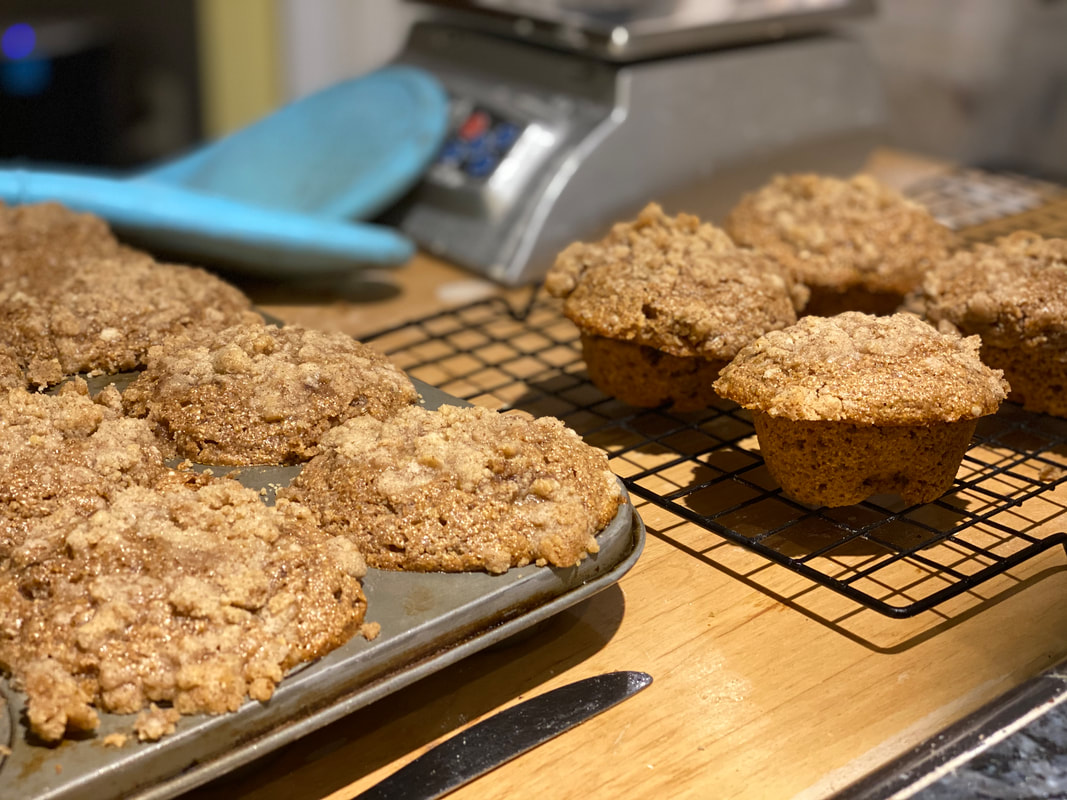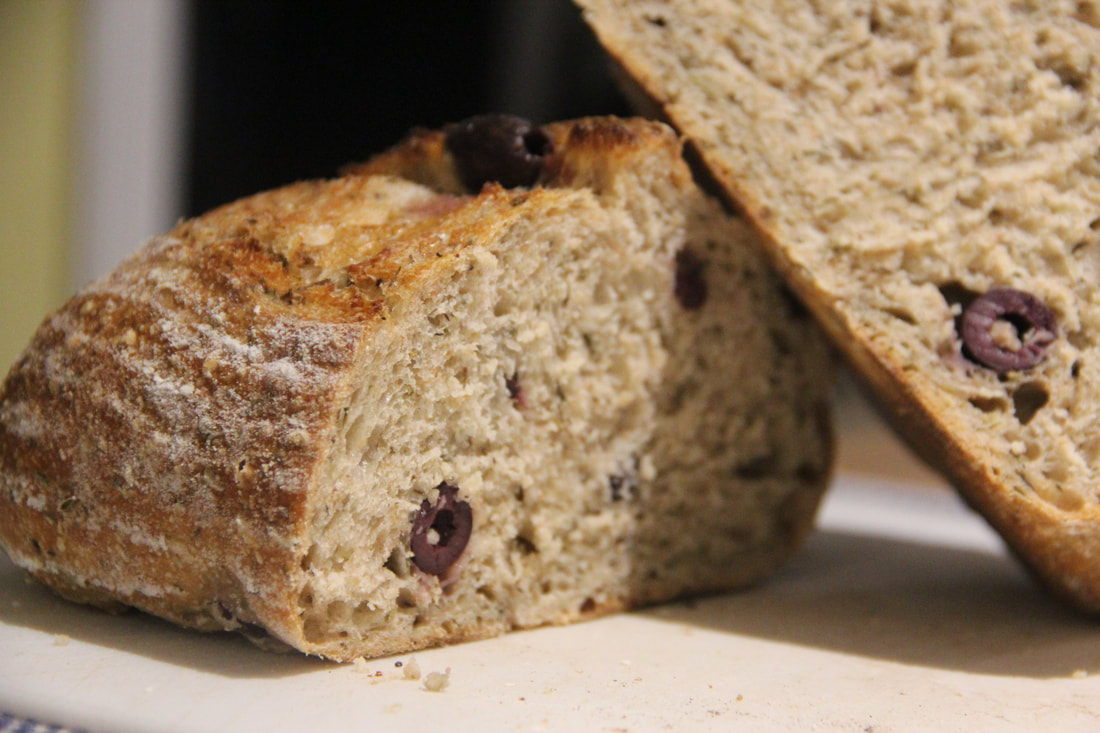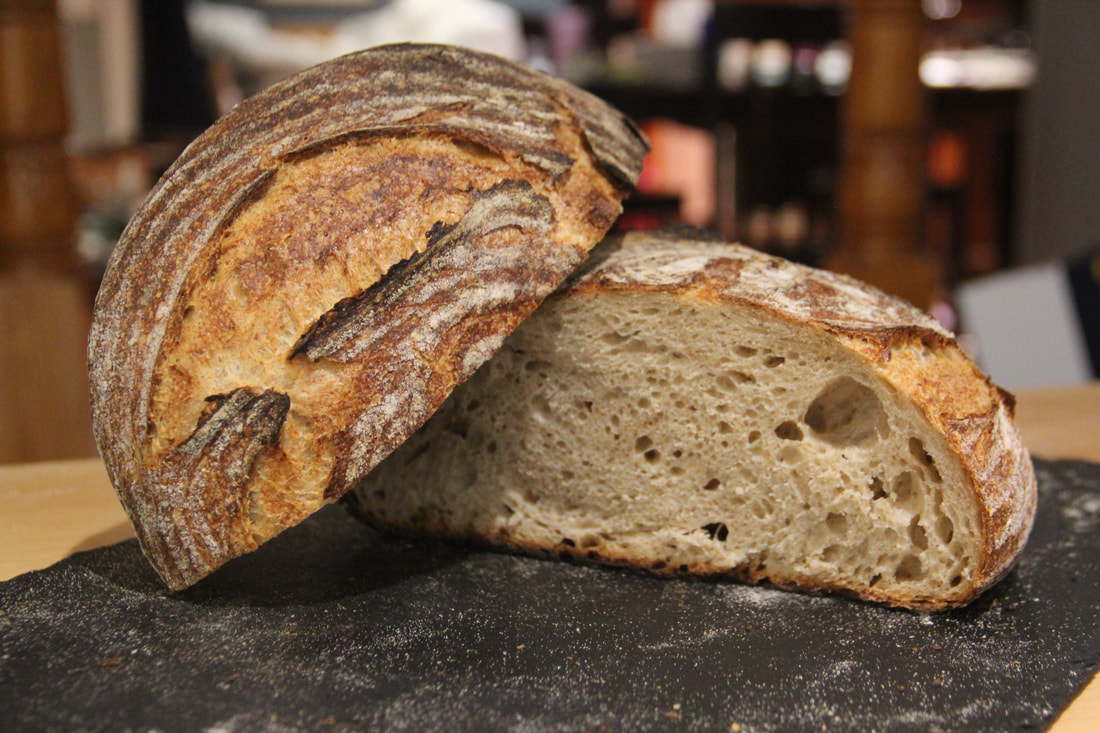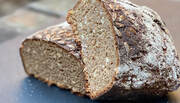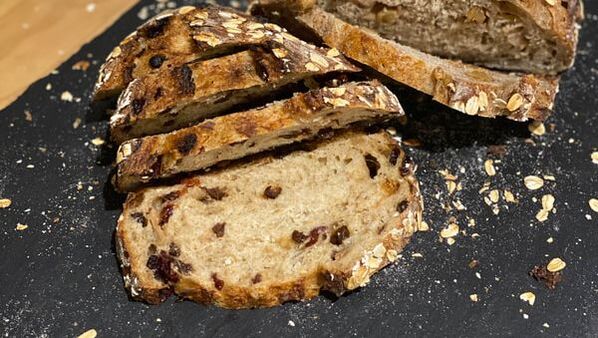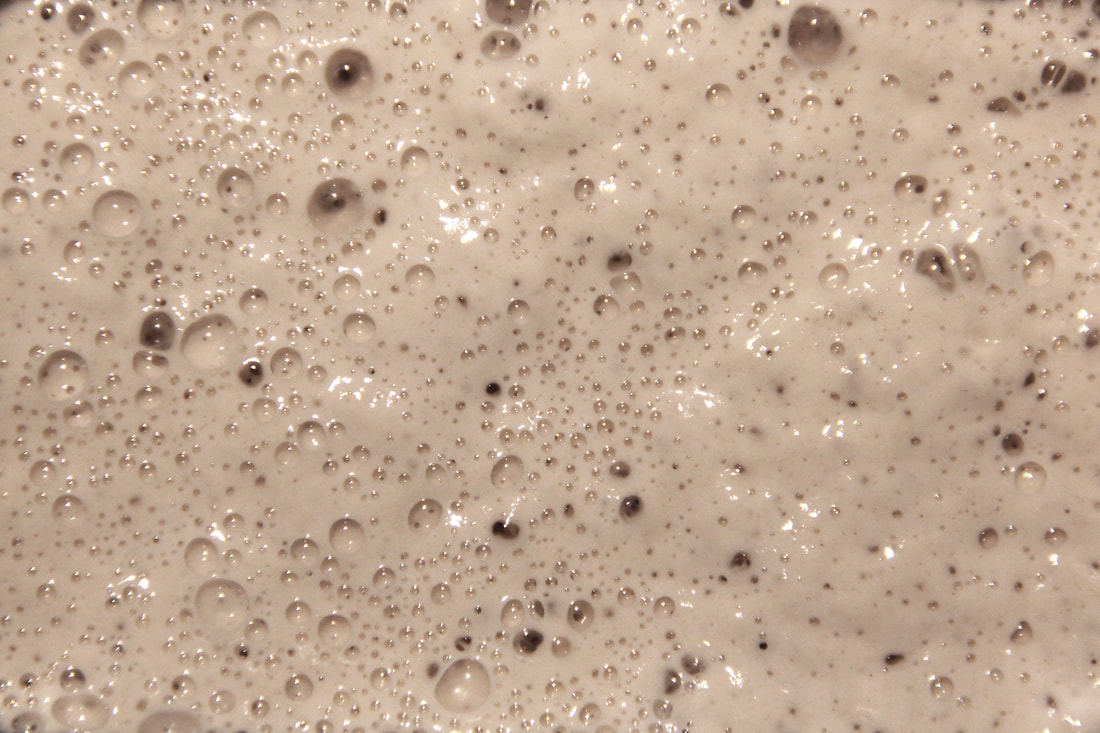|
EVERYDAY SOURDOUGH RECIPE
Having a staple sourdough is a wonderful joy. After making this bread over and over again, tweaking the hydration and the flour types slightly along the way, I have grown to love this loaf more through repetition. While I wouldn't call it predictable, as sourdough changes with the seasons, baking hundreds of batches of this bread does give me a consistently delicious loaf. This is the bread I recommend for your daily tables: It's versatile, classic, and dependable. This recipe features a meld of local bread flour, all-purpose flour, local whole rye flour, and local whole wheat flour, but it can be adapted to suit your pantry. If you're looking to acquire some great local grains, I have recommendations for local farms and mills in the mid-Atlantic region included in the recipe below. You can also check out the growing directories here and here to find a source closer to home. This recipe yields 2-1kg loaves (approximately).
EVERYDAY SOURDOUGH: TOTAL DOUGH FORMULA
EVERYDAY SOURDOUGH PROCESS
Prep
Proof
If you give the recipe a try, I'd love to hear how it goes! Let me know in the comments or on Instagram by tagging @jennycstarrs or using #starrssourdough!
1 Comment
Leave a Reply. |
|

